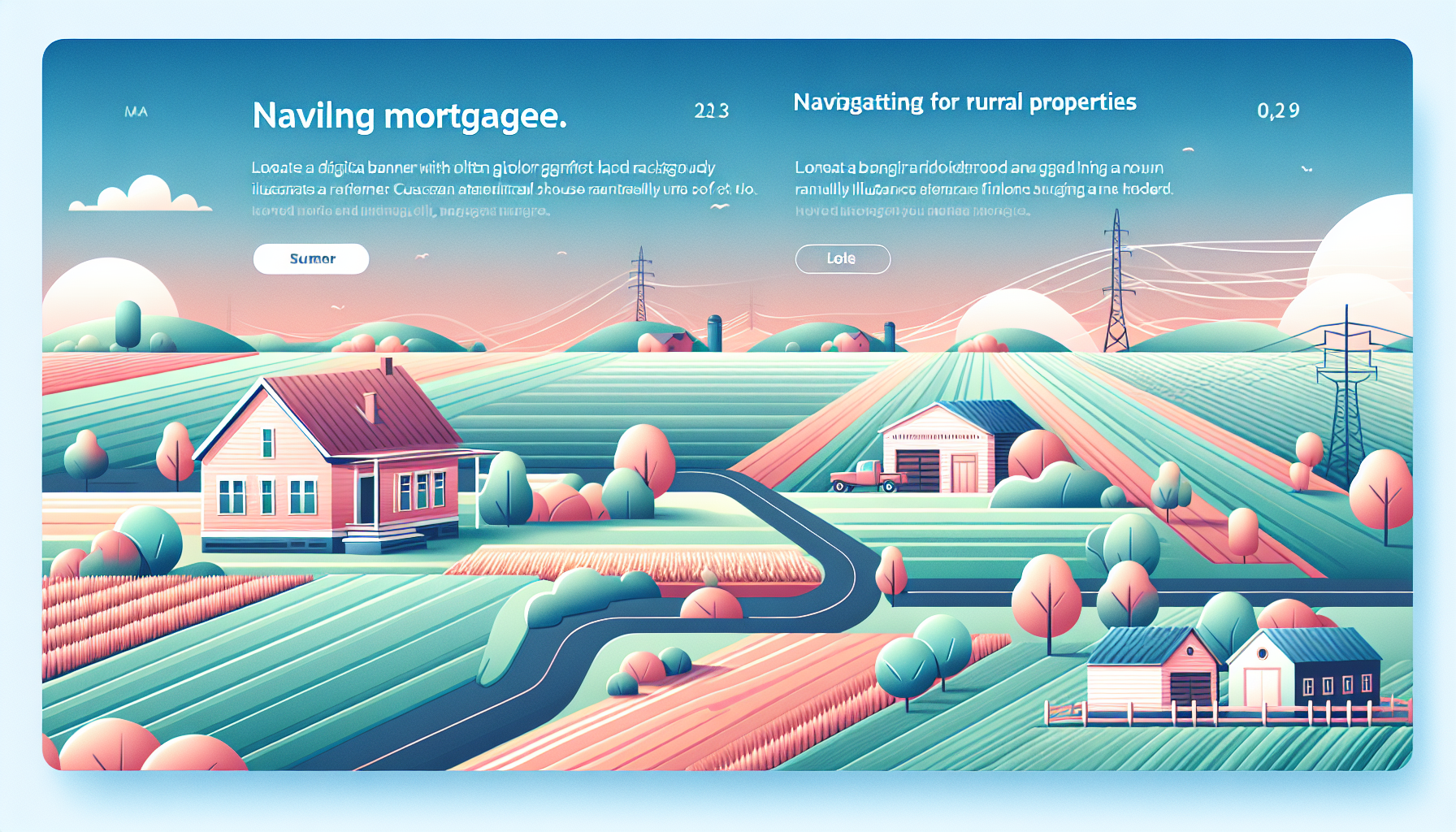Navigating Mortgages for Rural Properties

Purchasing a rural property can be a dream come true for many, offering a serene environment and often more space than urban settings. However, navigating the mortgage landscape for these properties can be complex, especially when considering options like USDA loans. In this article, we'll delve into the specifics of USDA loans, well and septic considerations, and acreage restrictions to help you make informed decisions.
Understanding USDA Loans
USDA loans are designed to support low-to-moderate income families in purchasing homes in rural and suburban areas. These loans offer favorable terms, including no down payment requirements and competitive interest rates. However, they come with specific eligibility criteria, primarily focusing on the property's location and the borrower's income level.
For a property to qualify for a USDA loan, it must be located in an area designated as rural by the USDA. You can check the eligibility of a property using the USDA's property eligibility map. This tool allows you to enter an address and determine if it falls within a qualified rural area. It's crucial to verify this eligibility early in the home-buying process to avoid potential issues later on.
Key Eligibility Requirements
- Location: The property must be in a designated rural area.
- Occupancy: The home must serve as the borrower's primary residence.
- Property Condition: The property must be structurally sound and in good repair.
- Income Limits: Borrowers must meet income limits that vary by location and household size.
For more detailed information on income limits and how they apply to your area, you can use tools like the USDA income limit calculator available on various mortgage websites.
Well and Septic Considerations
Properties in rural areas often rely on private wells and septic systems for water and waste management. When applying for a USDA loan, there are specific requirements regarding the distance between these systems and other potential sources of pollution.
Minimum Distance Requirements
- Well to Property Line: At least 10 feet.
- Well to Septic Tank: At least 50 feet.
- Well to Septic Drain Field: At least 100 feet, though this can be reduced to 75 feet if allowed by local authorities.
These distances are crucial to ensure the safety and quality of the water supply. For more detailed guidance on these requirements, you can refer to resources like USDA Loan Pro, which provides comprehensive insights into USDA loan requirements.
Acreage Restrictions
While there are no specific acreage restrictions for USDA loans, the property must be primarily residential in use and character. This means that while properties with acreage can qualify, they must not be used for commercial purposes like farming or renting. However, properties with barns or silos that are no longer in commercial use may still be eligible.
It's essential to ensure that any non-residential features on the property do not generate significant income, as this could disqualify the property from USDA financing. For example, if you have a large garden that occasionally sells produce, it might not be considered income-producing if the sales are minimal and not the primary purpose of the property.
Property Types Eligible for USDA Loans
- Single-Family Homes: These are the most common properties eligible for USDA loans and can include new constructions or existing homes.
- Condos and Townhomes: These may qualify if they are part of an approved development.
- Manufactured Homes: Eligible if they are new and permanently affixed to a foundation.
For more information on eligible property types and specific requirements, you can visit resources like USDA Rural Development or consult with a mortgage professional.
Real-World Examples and Case Studies
Let's consider a scenario where a family is interested in purchasing a rural property with a private well and septic system. They must ensure that the property meets the USDA's distance requirements between the well and septic systems. Additionally, they need to verify that the property is in a designated rural area and that their income falls within the eligible limits.
A real-world example might involve a family in Texas looking to buy a home on several acres. They would need to ensure that the property is not used for commercial farming and that any outbuildings are not income-producing. They could use tools like the WP Ultimate Loan & Mortgage Calculator to assess their mortgage options and understand how different loan terms might affect their monthly payments.
Conclusion and Next Steps
Navigating mortgages for rural properties requires careful consideration of several factors, including USDA loan eligibility, well and septic system requirements, and acreage restrictions. By understanding these elements and using the right tools and resources, you can make informed decisions and find the perfect rural home.
For personalized advice or to explore your mortgage options further, feel free to contact us. We're here to help you navigate the process smoothly and find the best mortgage solution for your needs.
Additionally, you can explore more resources on our website, such as our blog, which offers insights into various mortgage-related topics. Whether you're a first-time buyer or looking to refinance, we have the tools and expertise to guide you through the process.











